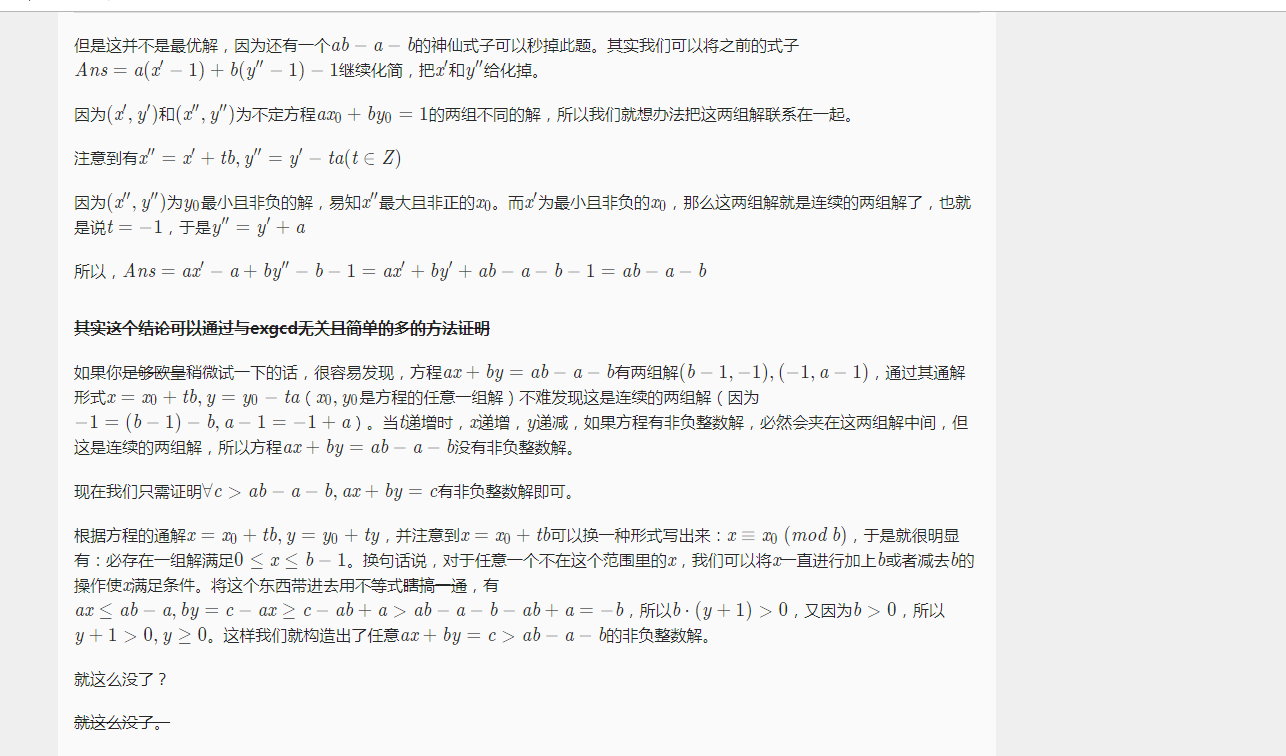(Input:a、b , Output:ans)
(Solution)
(1.Exgcd)
来自洛谷的题解,讲得很清楚

(Code)
#include <bits/stdc++.h>
using namespace std;
#define ll long long
ll t;
void exgcd(ll a,ll b,ll& x,ll& y){
if(!b){
x=1;
y=0;
return;
}
exgcd(b,a%b,x,y);
t=x;
x=y;
y=t-a/b*y;
}
ll a,b,x,y,xx,yy;
int main(){
scanf("%lld%lld",&a,&b);
exgcd(a,b,x,y);
t=x/b;
x-=t*b;
y+=t*a;
for(;x<0;)x+=b,y-=a;
xx=x;
for(;x>0;)x-=b,y+=a;
yy=y;
printf("%lld
",a*(xx-1)+b*(yy-1)-1);
return 0;
}
(O(1)结论)

#include<cstdio>
#include<iostream>
#define re register
#define ll long long
using namespace std;
inline ll read()
{
ll x=0,f=1; char ch=getchar();
while(ch<'0'||ch>'9'){if(ch=='-')f=-1;ch=getchar();}
while(ch>='0'&&ch<='9'){x=x*10+ch-'0';ch=getchar();}
return x*f;
}
ll a,b;
int main()
{
a=read(),b=read();
cout<<a*b-a-b;
return 0;
}
反证法
这有一篇反证法的博客
总之,考试的时候还是打表找规律比推结论更好用。
当题目输入的数据(<=2)个时,可以尝试打表找规律,会有奇效